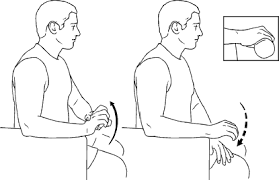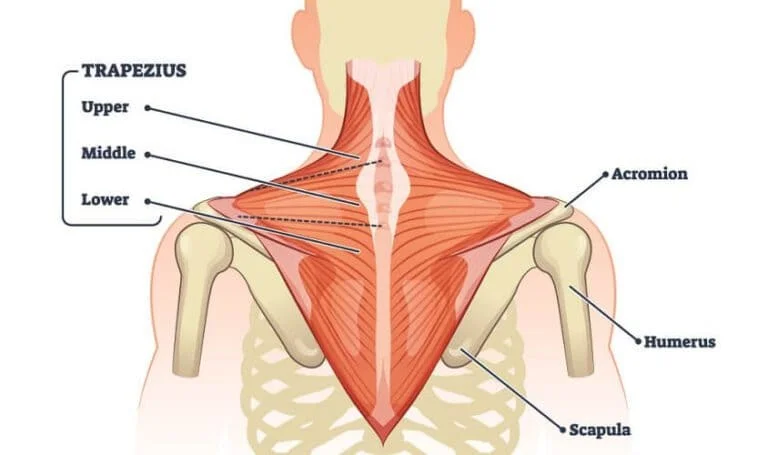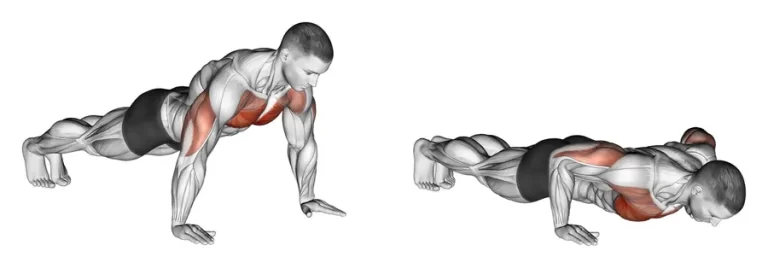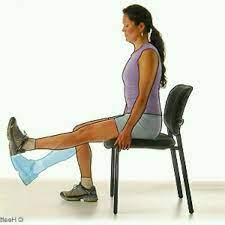13 Best Exercises For Radial Tunnel Syndrome
Find the most effective Exercises For Radial Tunnel Syndrome to reduce pain, strengthen your arms, and regain your range of motion. To help in the rehabilitation of the radial nerve, learn effective stretching and strengthening methods.
Table of Contents
Introduction:
One of the three major nerves in your arm, the radial nerve, can become compressed, leading to the painful disease known as “radial tunnel syndrome.” The elbow, where the radial nerve enters a short passage formed by muscle, bone, and tendon, is the most frequent location for compression of the nerve.
Radial tunnel syndrome is a condition in which the radial nerve is compressed, resulting in pain and weakness in the wrist and forearm. Exercise can help control symptoms and increase general strength and flexibility, although it may not be able to cure radial tunnel syndrome entirely.
Symptoms can be alleviated by exercises that facilitate the radial nerve’s passage through the elbow tunnel. Pain and soreness can also be reduced by strengthening and stretching the forearm muscles. With the help of a well-planned fitness program, you may get back to your usual activities, sports, and other hobbies. You can resume your everyday activities, job responsibilities, and participation in sports and other social activities by exercising regularly and following an exercise routine.
Follow your doctor’s instructions to ensure that this exercise program is safe and beneficial for you. To find out which exercises will help you reach your rehabilitation goals, consult your physician or a physiotherapist.
Causes:
Repeated Forearm Motions
- The nerve may get irritated if the forearm and wrist are frequently twisted, rotated, or extended.
- Tennis players, carpenters, and mechanics
- People who use keyboards or screwdrivers frequently
Muscle Tightness and Overuse
- Overuse of the forearm muscles, particularly the extensor and supinator muscles, can result in:
- Swelling of the muscles
- Tightness
- The radial nerve is under more pressure due to inflammation.
Injury or Direct Trauma
- A hit to the forearm or outer elbow may result in bruising, edema, or scar tissue, which could compress the nerve.
Anatomical variations
- Even in the absence of trauma or repetitive activity, some people may have tighter forearm muscle bands or naturally developing fibrous structures that compress the nerve.
Complications After Fractures or Surgery
- Scarring or unusual healing after surgery (e.g., lateral epicondylitis surgeries)
- Anatomical deformation caused by radial head fractures or dislocations that have not healed properly
Cysts or tumors
- Noncancerous growths in the forearm, such as ganglion cysts or lipomas, can put pressure on the nerve and cause problems.
Poor posture or ergonomics
- Over time, the radial tunnel may be strained by incorrect wrist or arm placement during work or exercise, such as resting the forearm on hard surfaces or gripping tools incorrectly.
Fibrosis and Scar Tissue
- Scar tissue that forms around the nerve after surgery or injury might irritate or restrict it inside the tunnel.
Inflammatory Disorders
- Illnesses that result in inflammation or swelling of tissue, such as:
- Rheumatoid arthritis
- Nerve compression may be indirectly caused by diabetes and hypothyroidism.
Signs and symptoms:
Pain
- Instead of intense pain, there is dull, burning, or painful suffering.
- Extension of the wrist and fingers or rotation of the forearm (supination/pronation) worsens pain.
Sensitivity
- Tenderness should be felt over the radial tunnel rather than directly on the lateral epicondyle.
Weakness
- Inability to extend the fingers or wrists.
- There could be a decrease in grip strength.
Pain at Night
- At night or after extended forearm-related activity, pain may get worse.
Prolonged Cases
- Reduced grip strength, exhaustion, and functional limits in daily or professional work can result from persistent symptoms.
- Compensatory movements may cause secondary shoulder or neck pain in some people.
Benefits of exercise:
Enhances Supporting Muscle Strength
- Targeted strengthening exercises strengthen the supinator and forearm extensor muscles, supporting the nerve and preventing further pain.
Gaining a greater range of motion and flexibility
- Compression of the radial nerve may result from tense muscles and surrounding tissues.
- The wrist and forearm can become more flexible with the use of mild stretches and mobilization procedures, which relieve pressure on the nerve.
Improves Blood Flow
- Exercise promotes healing and lowers inflammation around the radial tunnel by increasing blood flow to the affected regions.
Encourages Long-Term Healing
- Regular exercise improves grip strength, restores function, and lessens the likelihood of pain recurrence, enabling patients to safely resume their regular activities.
Prevents Muscular Unbalance
- By correcting improper biomechanics and avoiding overuse of particular muscle groups, balanced muscle activation helps lessen the tension on the radial nerve.
Pain and Inflammation Reduction
- In the radial tunnel region, controlled activities assist in reducing inflammation and alleviating pain by reducing muscle tension and stiffness.
Enhances Nerve Mobility
- Exercises for nerve gliding facilitate the radial nerve’s easy passage through surrounding tissues, reducing adhesions and increasing general flexibility.
Avoids Re-Injuries
- Regular exercise reduces the chance of recurrence or further damage to the nerve or surrounding tissues by improving muscle balance and posture.
Minimizes Nerve Compression
- In order to relieve pressure on the radial nerve and lessen pain, numbness, and tingling in the hand and forearm, gentle stretching and mobility exercises are recommended.
Improves Functional Capability
- You can carry out daily actions like gripping, lifting, and typing more effectively if you have better strength, flexibility, and nerve health.
Before starting an exercise program, consider these safety measures.
The best workouts for your particular problem will be decided by a physician or a physiotherapist. Consider a few safety measures before beginning any health program to maximize the advantages.
When something doesn’t seem right, you should listen to your body and not push yourself. Although soreness is a common side effect of exercise, persistent or severe pain could indicate overwork. Until you can manage feeling better, start with low-impact exercises and work your way up to harder ones.
Repetitive injuries can be avoided by keeping good posture and form. You should consult a physician if you are uncertain about how to begin exercising correctly. When beginning any exercise, warming up your muscles and joints to prepare them for the activity.
Exercises For Radial Tunnel Syndrome:
Wrist circle
- Face forward, stand upright, and place your feet hip-width apart.
- Make a fist with your right hand and move your hand clockwise while rotating your wrist in a circular manner.
- After completing ten spins in one direction, turn counterclockwise and do ten rotations in the other direction.
- Then return to your neutral position.
- Then relax.
- Repeat these exercises 5 to 10 times.
- Using your left hand, repeat the practice.

Fist exercise
- To begin, extend your fingers straight out.
- Form a hook fist, then turn to a straight hand.
- Form a complete fist and then return to a straight hand.
- Form a straight fist, then return to a straight hand.
- Hold each position for a few seconds.
- Then return to your neutral position.
- Then relax.
- Repeat these exercises 5 to 10 times.

Ball Squeeze
- To begin, stand on the ground.
- Having a tennis ball in your hand, form a fist with the tips of your fingers.
- Hold it firmly in your hand for a little while.
- Next, firmly squeeze the ball.
- Hold this position for a few seconds.
- Then return to your neutral position.
- Then relax.
- Repeat these exercises 5 to 10 times.

Elbow bend
- With your feet shoulder-width apart, take an upright position.
- Maintain a relaxed posture, a raised chest, and an upright back.
- At your sides, let your arms rest naturally with the palms facing up.
- To maintain the body stable, lightly contract your core muscles.
- Bend your elbow slowly and raise your hand to your shoulder.
- Your upper arm should remain close to your body and stable.
- Concentrate on using just your forearm.
- Breathe out slowly while you bend, and notice how your upper arm muscles tighten.
- When your hand approaches or almost touches your shoulder, stop.
- Hold this position for a few seconds.
- Lower your hand and take a breath.
- Avoid letting your arm drop too quickly and maintain control over the move.
- Then return to your neutral position.
- Then relax.
- Repeat these exercises 5 to 10 times.

Wrist Flexor Stretch
- Maintain a straight posture, with your shoulders relaxed and your back straight.
- Do not arch your back or lean forward; instead, maintain a neutral head and neck position.
- Straighten one arm out in front of you, shoulder height.
- Maintain a straight but relaxed elbow.
- The outstretched arm’s palm should be pointing upward toward the ceiling.
- Keep your fingers pointed away from your body.
- Hold the fingers of your outstretched arm lightly with your other hand.
- Take a deep breath to get ready for the stretch.
- Pull your palm and fingers back toward the floor while slowly bending your wrist backward.
- The inside of your forearm, from wrist to elbow, should feel stretched.
- Hold this position for a few seconds.
- Breathe out slowly as you deepen the stretch and apply light pressure.
- Then return to your neutral position.
- Then relax.
- Repeat these exercises 5 to 10 times.

Thumb flexion
- Start by extending your left hand straight with all of your fingers.
- The palm of your hand should be facing your thumb as you flex it.
- Using your thumb, apply pressure on the small fingertip.
- You shouldn’t be concerned if you can’t reach your little finger.
- To say it easily, reach as far as you can with your thumb.
- Hold this position for a few seconds.
- Then return to your neutral position.
- Then relax.
- Repeat these exercises 5 to 10 times.

Wrist-extensor-stretch
- When you sit comfortably, your arm should be extended straight ahead of you.
- Maintain a straight elbow while keeping your palm down.
- Using your other hand, gently draw your fingers back toward your body.
- Your elbow, upper wrist, and forearm should all feel stretched.
- Hold this position for a few seconds.
- Keep the stretch mild and avoid pushing yourself too much.
- Gradually release the stretch by relaxing your wrist.
- Then return to your neutral position.
- Then relax.
- Repeat these exercises 5 to 10 times.

Wrist Supination and Pronation
- Take a seat in the chair or at the table to begin.
- Put your arms by your sides, please.
- A little dumbbell can be used as resistance.
- Rotate your hands so that the palms are facing up.
- Hold this position for a few seconds.
- Now extend your arm with your palm facing downward.
- Maintain this posture for a short while.
- Then return to your neutral position.
- Then relax.
- Repeat these exercises 5 to 10 times.

Wrist Extension with Light Resistance
- Start with the seating position in the chair.
- On a level surface, such as a table or stool, place your forearm.
- To allow for unrestricted mobility, your hand and wrist should hang just over the edge.
- A light dumbbell should be held in your hand.
- Keep your forearm fully supported and your elbow bent around 90 degrees.
- Be sure to keep your shoulders relaxed and your spine neutral.
- Breathe in to get ready.
- Breathe out slowly while raising your hand and stretching it at the wrist.
- Just move your hand; don’t move your forearm.
- Only your wrist joint should make the move.
- Raise your hand till it is almost parallel to your forearm.
- Hold this position for a few seconds.
- As you gradually return the weight to its initial position, take a breath.
- Slowly and carefully move, letting your wrist flex downward.
- Then return to your neutral position.
- Then relax.
- Repeat these exercises 5 to 10 times.

Wrist turn
- The first step is to stand on the ground.
- Next, straighten your elbow and reach forth.
- Having little to no weight on it, and the palm facing up.
- As you carefully turn your wrist, maintain your palm downwards.
- Hold this position for a few seconds.
- Then return to your neutral position.
- Then relax.
- Repeat these exercises 5 to 10 times.

Finger spreading exercises
- Start in a standing position on the ground.
- Next, extend your hands out.
- Spread your fingers as comfortably as you can.
- Hold this position for a few seconds.
- Move your fingers back to their initial position.
- Then return to your neutral position.
- Then relax.
- Repeat these exercises 5 to 10 times.

Biceps curl
- Start by standing on the floor.
- Hold a light dumbbell in each hand as your arms are completely extended toward the floor with your palms facing front.
- Keep your elbows close to your upper body and your shoulders relaxed.
- Bend your elbows and steadily curl the dumbbells upward using your biceps.
- Make sure your upper arms remain stable and only your forearms are moving.
- Bend the weights until your forearms are nearly parallel to the floor or your biceps contract effectively.
- Squeeze your biceps at the top of the curl for one to two seconds to properly stimulate them.
- Hold this position for a few seconds.
- Lower your dumbbells.
- Then return to your neutral position.
- Then relax.
- Repeat these exercises 5 to 10 times.

Radial Nerve Glides
- With your arms at your sides, take a comfortable stance.
- Reach your fingers toward the floor and lower your shoulder.
- Flex your wrist with the palm facing up while internally rotating your arm (thumb toward your body).
- Turn your head slightly aside from the side that you are stretching.
- As you keep flexing your wrist and tilting your head, raise your arm up and away from your body.
- For three to five seconds, hold each glide position.
- Then return to your neutral position.
- Then relax.
- Repeat these exercises 5 to 10 times.

What precautions should be followed when working out?
Keep Up a Personalized Workout Schedule
- Your symptoms and healing stage should inform the exercises you do.
- Observe the recommendations of a physiotherapist, particularly during the initial stages of healing.
Make sure you fully warm up before beginning any activity.
- A proper warm-up reduces nerve pain, increases blood flow, and relaxes muscles.
- Do any mild cardiovascular activity, such as walking or cycling, for five to ten minutes.
Make Use of the Correct Method
- It’s crucial to finish each workout carefully and gently.
- Get your form checked by a therapist or use a mirror.
Take a break after working exercise.
- Helps in the healing of inflammatory tissue and the removal of metabolic waste.
- Stretching the wrist’s flexors and extensors should be done carefully.
Make use of lightweight.
- Use a smaller weight for more repetitions to keep the muscle activated without overstressing it.
Pay attention to the level of repetition and intensity.
- Repetition and sets should be kept to a minimum to avoid fatigue.
- To avoid everyday repetitive tension, switch up your rest days.
Avoid Rushing Your Rehab.
- Rushing into intense activity can lead to re-injury, so make sure you increase your pace gradually.
- Allow yourself time to recover before beginning high-impact activities, such as heavy lifting, again.
Avoid making painful motions.
- A slight amount of pain is normal, but if you experience severe pain or swelling, stop.
- Refrain from enduring severe pain since this could worsen the harm.
Make use of the proper techniques and ergonomics.
- Improper form might increase forearm strain and further compress the radial nerve.
- Maintain a neutral wrist position.
- Keep your elbows slightly bent rather than locked out.
Make sure you consume lots of fluids and get enough sleep.
- Get enough rest to help in muscle reconstruction and restoration.
- Drink plenty of water.
Avoid making painful motions.
- If exercise increases symptoms or causes intense pain, it should be stopped right away.
When did you stop exercising?
Extreme or Surprising Pain During Exercise
- Stop doing that activity right away when you get sudden, strong pain that feels like something sharp.
- This may indicate that the damage is getting worse or that there is excessive stress.
Following an Activity, Dizziness
- Small amounts of swelling are common in the beginning, but if they get significantly worse after exercising, come back after they have gone away, or are followed by redness or warmth, your body may be reacting to repetitive strain or reinjury.
- Resuming only after the edema is gone and under supervision.
Loss of Grip Weakness or Strength
- Give your wrist more rest if it feels weak or unstable before you resume your routines. Avoid activities requiring strong grasping.
Inflammation or Complications
- New or worsening edema following exercise is a sign that the joint is overstressed.
- Rest, take a break, and consult your doctor or a physiotherapist.
After several weeks, there was no improvement.
- For more than two to three weeks, stop and get medical attention if the pain, stiffness, or weakness persists.
An increase in numbness or tingling
- If you experience burning, tingling, or numbness that worsens, stop immediately.
- These signs may indicate stress or inflammation of the nerves.
If you have Radial Tunnel Syndrome, what exercises should you stay away from?
Exercises and activities that irritate or compress the radial nerve in your forearm should be avoided if you have Radial Tunnel Syndrome (RTS). The objective is to promote healing while lowering strain, inflammation, and nerve tension.
The following exercises and motions should be avoided:
Exercises for Forceful Wrist Extension
- Your wrist’s extending muscles are beneath and through the radial nerve.
- Wrist extensions that are too strong or frequent can further compress the nerve.
- Excessive wrist extension using bands or weights
- Wrist curls in reverse with resistance
- Using grasping and wrist extension too much
Strong Holds or Repeated Grasping Tasks
- The flexors and extensors in the forearm are both activated by tight grasping, which raises the pressure inside the radial tunnel.
- Hand grippers or tension balls are squeezed.
- During the acute period, racquet sports or rock climbing
- Pull-ups, deadlifts, and rows are examples of heavy weightlifting that call for a firm grip.
High-Speed or Repeated Forearm Motions
- The radial tunnel becomes more irritated and prone to friction when the palm is turned up and down repeatedly.
- Making use of drills or power tools
- Throwing sports or rapid tennis, or racquet sports
- Long stretches of time spent typing or using a mouse without rest
What are some ways to prevent radial nerve compression?
By protecting the nerve from repetitive strain, prolonged pressure, and stiffness in the forearm and upper arm muscles, radial nerve compression can be prevented.
Enhance your posture and ergonomics.
- Keep your wrists straight (neutral) and not bent up or down when typing or using a mouse.
- Use wrist supports or padded armrests to prevent prolonged periods of time spent leaning on your elbows or forearms.
- Maintain a comfortable posture with your shoulders slightly back.
Develop Stronger Supportive Muscles
- Forearm and shoulder muscles that are balanced and strong help to lessen nerve strain.
Break Frequently from Repeated Motions
- Use your hands and forearms frequently when typing, using tools, playing tennis or volleyball, or lifting.
- Stretch for one to two minutes every thirty to forty-five minutes.
- Roll your shoulders, turn your forearms gently, and flex or stretch your wrists.
- Make use of neutral wrist alignment ergonomic tools.
Summary:
The disorder known as “radial tunnel syndrome” comes on by pinching or compressing the radial nerve, one of the nerves that passes through your arm. Your radial nerve travels through a network of muscles and tendons known as the radial tunnel before arriving at your elbow and forearm. A constant pain and weakness in your arm may result from pressure on your radial nerve caused by tightness and edema in the radial tunnel.
It can be challenging to carry out daily duties when dealing with radial tunnel syndrome pain. Your daily activities, career, sports, and hobbies could all be affected. Let your arm rest and quit doing the things that are increasing your symptoms.
By incorporating these exercises into your daily routine, you may improve your overall health and lessen pain in addition to maintaining good posture and movement awareness. A physiotherapist should always be consulted before beginning a new fitness program, especially if you have a specific injury or condition.
FAQ:
What signs and symptoms follow radial tunnel syndrome?
A dull, painful ache in the outside of the elbow and forearm is one of the symptoms of radial tunnel syndrome. When the wrist or fingers are straightened, the pain might turn severe or stabbing. Tenderness in the forearm, a decreased grip, and trouble extending the wrist or fingers are other typical symptoms. There may also be tingling or numbness, especially on the back of the hand.
Is it possible for radial tunnel syndrome to get better itself?
With time and careful therapy, radial tunnel syndrome can sometimes resolve on its own. Surgery can be required, though, if your pain is severe or does not improve with conventional therapies.
What are radial tunnel syndrome risk factors?
Space-occupying diseases, including tumors, local edema, inflammation, excessive hand and wrist use from repeated motions, and physical trauma to the proximal forearm with associated bleeding, are just a few of the many causes of radial tunnel syndrome.
Does radial tunnel syndrome get better with heat?
Making sure the hands are well-rested is the best strategy to treat Radial Tunnel Syndrome. Warm heat and ice can help improve blood flow and lessen inflammation in the arms, which helps lessen pain there.
What does Radial Tunnel Syndrome exercise therapy aim to achieve?
Minimize muscular tension and nerve pain.
Restore the radial nerve’s range of motion.
Improve your shoulder and forearm strength.
Recurrent injury can be avoided with ergonomic training and proper posture.When may I begin Radial Tunnel Syndrome exercises?
Once initial pain and inflammation go away, usually within a few days to weeks, depending on the severity, you can start mild mobility and stretching activities.
Which workouts should I stay away from if I have Radial Tunnel Syndrome?
Avoid doing things like resistant supination or excessive wrist extension that might compress or irritate the radial nerve.
Frequently grabbing or twisting.
Forceful stretching of the nerves
Strengthening the forearms with high resistance at an early age may worsen symptoms by raising radial tunnel pressure.How frequently ought I to perform the exercises?
Stretching and mobility exercises: 1-2 per day
Strengthening: every other day, three to four times a week
Nerve glides: As directed or once a day (don’t overdo it).
Intensity is not as effective as consistency and gradual advancement.Is it possible to cure Radial Tunnel Syndrome with exercise?
With rest, exercise, and ergonomic adjustments, mild to moderate cases frequently show notable improvements.
But recovery also depends on:
Lessening the effects of repetitive strain
Best posture and workspace arrangement
Returning gradually to activities while avoiding irritating motions.
Medical care may be necessary for severe or persistent instances.How much time does recovery take?
Recovery duration varies:
Mild cases: four to six weeks
Moderate cases: eight to twelve weeks
Post-operative or chronic: a few months
The management of nerve irritation and the proper progression of workouts are key factors in healing.Radial tunnel syndrome: what causes it?
Repetitive forearm rotation, or twisting the palm up or down, is one of the common causes.
Firmly grasping or extending the wrist.
Direct injury to the forearm or outer elbow.
Overuse of muscles, particularly in manual laborers or athletes.
Repeated strain or bad posture when working at a desk.
Muscular tightness or edema that causes compression.How long-lasting is Radial Tunnel Syndrome?
Usually not; if identified early and worsening behaviors have been fixed, most patients recover completely with conservative management. Nerve compression can produce constant pain or muscular weakening if left untreated for months or years, but this is rare when treated properly.
What are some ways to avoid Radial Tunnel Syndrome?
Keeping your forearm and wrist postures neutral is one prevention strategy.
Taking regular breaks from repetitive tasks.
Every day, forearm muscles stretch.
Avoid applying too much pressure to the upper arm or forearm.
To lessen pressure on the forearm, strengthen the shoulder stability.
Utilizing ergonomic instruments with padded grips.
References:
- Orthopaedic Surgeons’ American Academy, n.d. Radial tunnel syndrome treatment exercise regimen. https://www.orthoinfo.org/globalassets/pdfs/a00791_radial-tunnel-syndrome_final.pdf: therapeutic-exercise-program
- Radial tunnel syndrome: what is itSymptomsms, diagnosis, treatment, and causes. (n.d.). Radial tunnel syndrome
- Pure Physio + Sports. October 6, 2025. Pure Unity Health’s early workout program for Radial Tunnel Syndrome. Health of Pure Unity. Exercise plans for early radial tunnel syndrome: https://pureunityhealth.co.uk/exercise-programme/
- Dhameliya, N. October 12, 2025. The top ten exercises for treating Radial Tunnel Syndrome. Exercise and physical therapy treatment. https://physical-therapy.us/radial tunnel syndrome exercises/
- The state of Handcare at https://www.assh.org Knight’s 2024 exercises for alleviating radial tunnel syndrome pain
- (n.d.) Null. Nothing CB Physical Therapy. The top five exercises for radial tunnel syndrome, as published by CbPhysiotherapy, https://cbphysiotherapy.in/exercise
- Syndrome of Radial Tunnel. September 12, 2025. The Cleveland Clinic. Radial tunnel syndrome (15658) https://my.clevelandclinic.org/health/diseases
- On September 25, 2025, Knight, J. Exercises to relieve the pain of Radial Tunnel Syndrome. Institute for Hand and Wrist. Hand and wrist institute blog: Radial tunnel syndrome exercises to relieve pain
- Image 13, The final version of the therapeutic exercise program for radial tunnel syndrome can be found at https://www.orthoinfo.org/globalassets/pdfs/a00791_







